Epha4
-
Official Full Name
EPH receptor A4 -
Overview
This gene belongs to the ephrin receptor subfamily of the protein-tyrosine kinase family. EPH and EPH-related receptors have been implicated in mediating developmental events, particularly in the nervous system. Receptors in the EPH subfamily typically h -
Synonyms
EPHA4;EPH receptor A4;EphA4 , TYRO1;ephrin type-A receptor 4;Hek8;EK8;EPH-like kinase 8;TYRO1 protein tyrosine kinase;tyrosine-protein kinase TYRO1;tyrosine-protein kinase receptor SEK;receptor protein-tyrosine kinase HEK8;SEK;TYRO1
Recombinant Proteins
- Human
- Mouse
- Rhesus macaque
- Chicken
- Rat
- Cynomolgus
- HEK293
- E.coli
- E. coli
- Mammalian Cells
- Sf9 Cells
- Insect Cells
- Wheat Germ
- Human Cells
- In Vitro Cell Free System
- His
- Fc
- GST
- Non
- Flag
- Avi
Background
What is EPHA4 protein?
EPHA4 (EPH receptor A4) gene is a protein coding gene which situated on the long arm of chromosome 2 at locus 2q36. This gene belongs to the ephrin receptor subfamily of the protein-tyrosine kinase family. EPH and EPH-related receptors have been implicated in mediating developmental events, particularly in the nervous system. Receptors in the EPH subfamily typically have a single kinase domain and an extracellular region containing a Cys-rich domain and 2 fibronectin type III repeats. The ephrin receptors are divided into 2 groups based on the similarity of their extracellular domain sequences and their affinities for binding ephrin-A and ephrin-B ligands. The EPHA4 protein is consisted of 986 amino acids and its molecular mass is approximately 109.9 kDa.
What is the function of EPHA4 protein?
Upon activation by ephrin ligands, EPHA4 modulates cell morphology and integrin-dependent cell adhesion through regulation of the Rac, Rap and Rho GTPases activity. It plays an important role in the development of the nervous system controlling different steps of axonal guidance including the establishment of the corticospinal projections. In the nervous system, EPHA4 also plays a role in repair after injury preventing axonal regeneration and in angiogenesis playing a role in central nervous system vascular formation. Additionally, its promiscuity makes it available to participate in a variety of cell-cell signaling regulating for instance the development of the thymic epithelium.
EPHA4 Related Signaling Pathway
EPHA4 is involved in many important signaling pathways, which play an important role in cell growth, differentiation, apoptosis, and migration. For example, Ephrin-Eph signaling pathway, ERK signaling pathway, Wnt/β-catenin signaling pathway and so on.
EPHA4 Related Diseases
Due to its important role in signaling pathways, functional abnormalities associated with EPHA4 may lead to a variety of diseases, including neurological developmental disorders (such as congenital brain tumor-like malformations or epilepsy), white matter damage, neurodegenerative diseases (such as Parkinson's disease and Alzheimer's disease), tumors, and more. In addition, mutations in EPHA4 have been linked to a number of human genetic diseases, such as congenital muscular dystrophy and loss of consciousness syndrome.
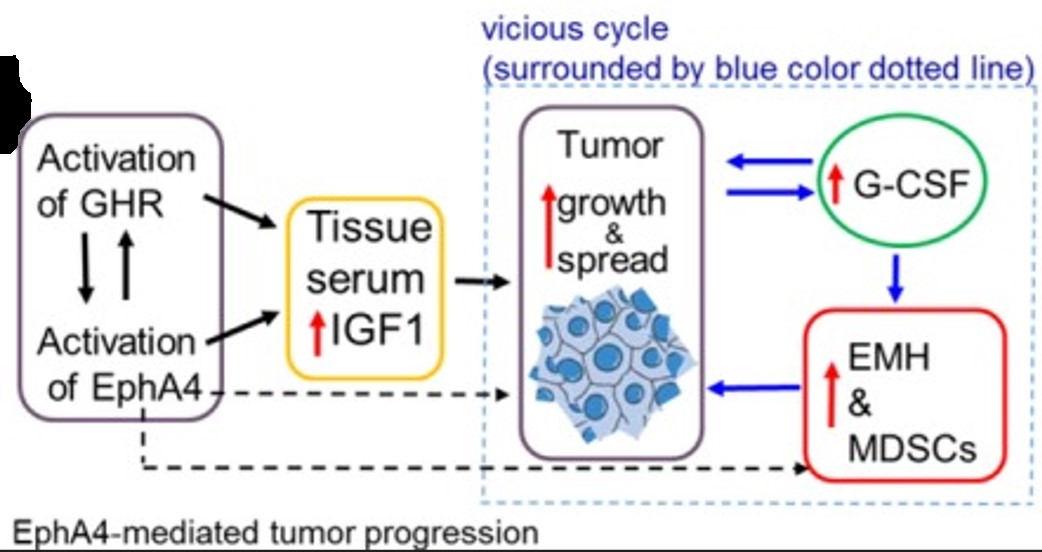
Fig1. The vicious cycle (surrounded by blue dotted line) was regulated by EphA4-mediated IGF1 synthesis pathway. (Xuefeng Jing, 2016)
Bioapplications of EPHA4
As for the application of EPHA4, although there is currently no clear therapeutic or drug target for EPHA4 treatment, the latest research suggests that EPHA4 may be a potential therapeutic target with the potential to treat neurological diseases and cancer. At the same time, EPHA4 can also be used as a diagnostic indicator to assess the risk and progression of the disease.
Case Study
Case Study 1: Shinichiro Kina, 2023
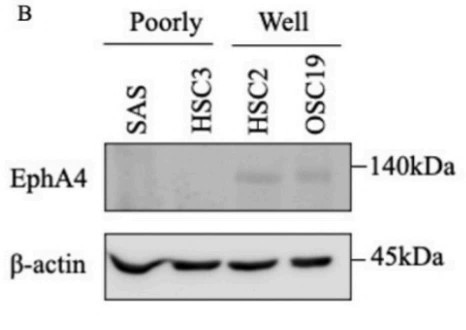
Fig1. Western blots of OSCC for EphA4 expression and β-actin as a housekeeping control.
Case Study 2: Shinichiro Kina, 2023
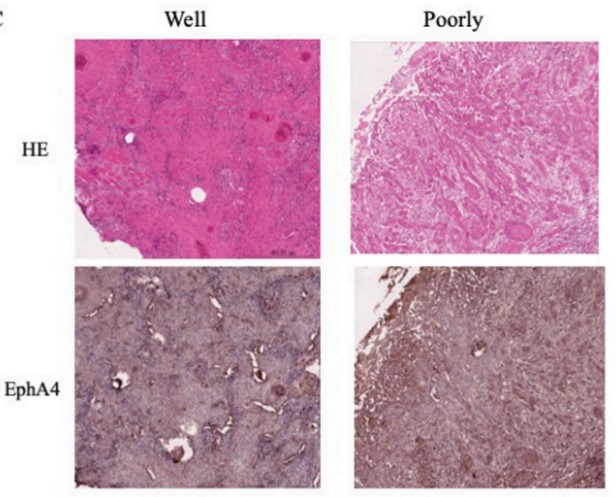
Fig2. Differences in the expression of EphA4 in well- and poorly differentiated oral squamous
cell carcinoma (OSCC).
Quality Guarantee
High Purity
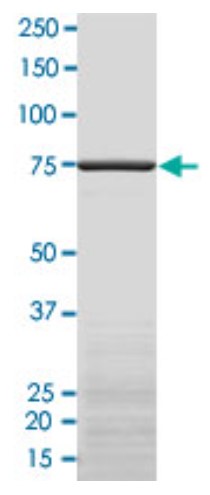
Fig1. SDS-PAGE (EPHA4-3385H) (PROTOCOL for western blot)
.
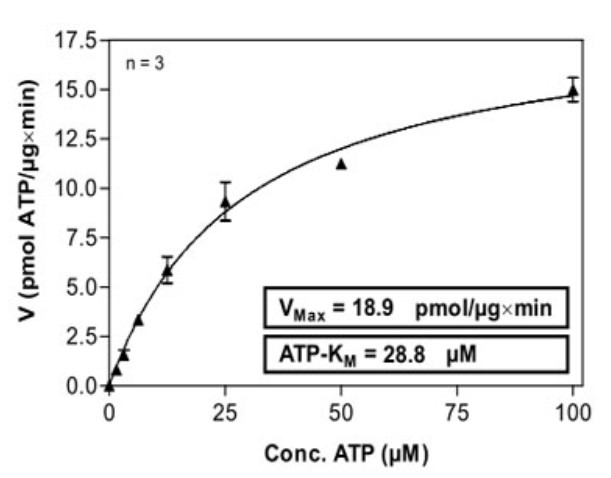
Fig2. Activity Data. (EPHA4-3385H)
Involved Pathway
Epha4 involved in several pathways and played different roles in them. We selected most pathways Epha4 participated on our site, such as Axon guidance, which may be useful for your reference. Also, other proteins which involved in the same pathway with Epha4 were listed below. Creative BioMart supplied nearly all the proteins listed, you can search them on our site.
| Pathway Name | Pathway Related Protein |
|---|---|
| Axon guidance | JAK3,ROCK1,TRPC7,RND1,CDK5R1B,KIF4A,PLXNA1,DCC,CAP1,SHB |
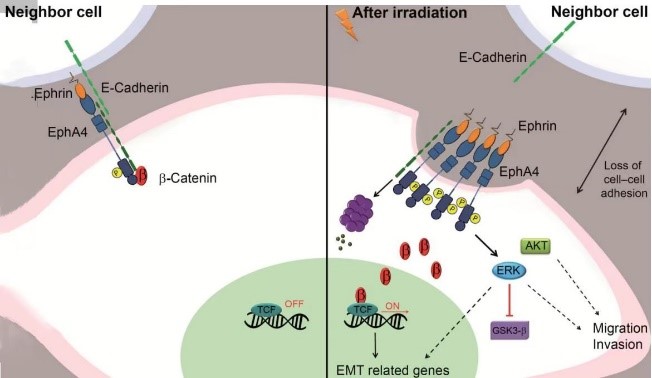
Fig2. llustration of the signaling pathways induced in the progeny of colorectal cancer. Unirradiated (left) and irradiated (right) cells. (Priscila Guimarães de Marcondes, 2017)
Protein Function
Epha4 has several biochemical functions, for example, ATP binding,DH domain binding,GPI-linked ephrin receptor activity. Some of the functions are cooperated with other proteins, some of the functions could acted by Epha4 itself. We selected most functions Epha4 had, and list some proteins which have the same functions with Epha4. You can find most of the proteins on our site.
| Function | Related Protein |
|---|---|
| PH domain binding | INPP5A,EPB41L2 |
| ephrin receptor binding | SHC1,CHN1,GRB2,NTRK1,EFNB2,EFNA3B,NTRK3,EFNA1,EFNA5B,EFNA1A |
| identical protein binding | ZNHIT6,MUL1,NOXO1,TRIP13,RNF4,PSME3,ERBB2,PARK2,GSTM3,NEFL |
| protein kinase activity | PRKAB1,NLK2,SLKA,CSNK1G2A,PRKACAB,ERBB3A,TNK2B,CDK13,MAPKAPK2,PKN2 |
| GPI-linked ephrin receptor activity | EPHA7,EK1,EPHA5,EPHA8,EPHA3 |
| protein binding | RGS14,CIC,AMDHD2,NUPL1,CD226,LILRA4,ACAA2,PODXL,CRY1A,ZNF559 |
| transmembrane-ephrin receptor activity | EPHA5,EPHB1,EPHA10,EPHA1,EPHB2,EFNB3,EFNA4,EFNA3 |
| ATP binding | NMRK1,NLRP7,MARK1,PKN2,SKIV2L2,SMG1,TAP1,PRPS1L1,BRAF,H1FNT |
Interacting Protein
Epha4 has direct interactions with proteins and molecules. Those interactions were detected by several methods such as yeast two hybrid, co-IP, pull-down and so on. We selected proteins and molecules interacted with Epha4 here. Most of them are supplied by our site. Hope this information will be useful for your research of Epha4.
IKBKG;HSP90AB1
Resources
Related Services
Related Products
References
- Shi, M; Movius, J; et al. Cerebrospinal Fluid Peptides as Potential Parkinson Disease Biomarkers: A Staged Pipeline for Discovery and Validation. MOLECULAR & CELLULAR PROTEOMICS 14:544-555(2015).
- Kempf, A; Montani, L; et al. Upregulation of axon guidance molecules in the adult central nervous system of Nogo-A knockout mice restricts neuronal growth and regeneration. EUROPEAN JOURNAL OF NEUROSCIENCE 38:3567-3579(2013).



